�
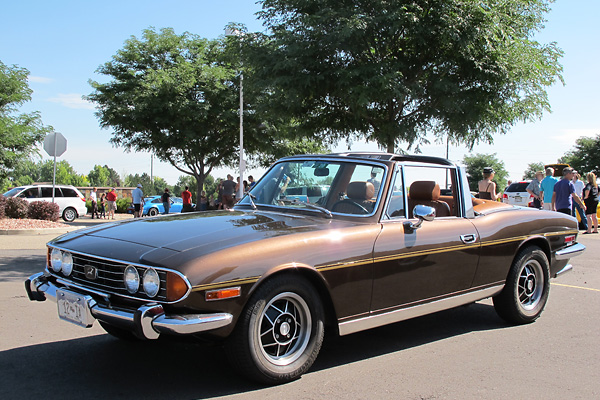
�
Glenn Merrell's 1973 Triumph Stag with Original Triumph 3.0L V8
� as published in British V8 Newsletter, Volume XXI Issue 2, December 2013�� � Owner: Glenn Merrell
� BritishV8 UserID: StagByTriumph
� City: Lafayette, Colorado
� Model: 1973 Triumph Stag
� Engine: Triumph 3.0L V8
�
| Engine: | �Triumph 3.0L V8 engine, rebuilt.�
Dual Zenith Stromberg 175 CDSEV carburetors.�
Lucas 35D8 distributor.�
Pertronix Ignitor breakerless/electronic ignition module.�
Pertronix Flame Thrower ignition coil. | �
| Exhaust: | �all stainless steel dual exhaust system.�
Dual stainless steel mufflers. | �
| Cooling: | �stock radiator.�
Stock engine driven cooling fan.�
Stock dual electric fans ahead of the air conditioning condensor.�
Polycarbonate reproduction radiator cowling. | �
| Transmission: | �Borg Warner Type 35 three speed automatic. | �
| Rear End: | �Triumph Stag 3.43:1 ratio.�
Phantom Grip limited slip differential.�
Goodparts CV jointed rear axles. | �
| Front Susp.: | �stock MacPherson strut suspension.�
KYB strut cartridges.�
SuperFlex polyurethane bushes. | �
| Rear Susp.: | �stock independent suspension.�
KYB shock absorbers.�
SuperFlex polyurethane bushes. | �
| Brakes: | �stock Lockheed master cylinder and power brake servo.�
EBC drilled/slotted front brake rotors.�
EBC Green Stuff pads.�
Dust shields temporarily removed.�
Stock rear drum brakes. | �
| Wheels/Tires: | �stock 5-spoke alloy wheels.�
Pirelli P400 Touring 185/75R14 tires. | �
| Body: | �repainted with 2006 Ford Metallic Bronze paint.�
Brown mohair soft top.�
Body color factory hard top. | �
| Interior: | �interior restored.�
Leather trimmed dashboard top.�
All carpets replaced.�
Stock instruments.�
Original factory-installed air conditioning. | �
| Comments: | �Glenn is the third owner of this California car. He purchased it on�
July 2 of 2011 immediately before the Vintage Triumph Registry meet at�
Breckenridge Colorado, where it placed second in Concours judging!�
It's a very, very original car in almost all respects. The most conspicuous�
exception is its paint color. The hue is close to original, but the new�
paintjob features metallic flakes. This is no trailer queen though; Glenn�
drives it frequently and BritishV8 photographed it at a casual "cars and�
coffee" meet-up. | �
Engine Installation
��
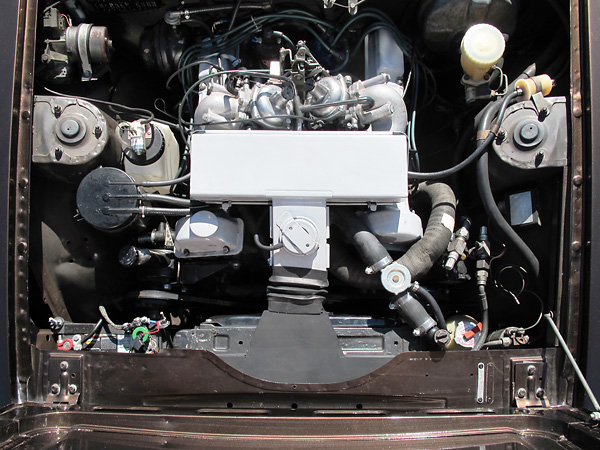
�
Triumph 3.0L V8 engine, rebuilt to stock specs except with flat top pistons to
�
slightly raise the compression ratio from a starting point of ~7.75:1.
�
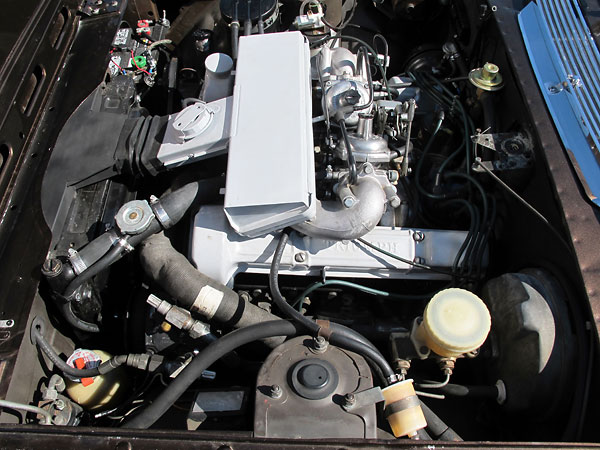
�
Triumph 3.0L V8 engines came in a low power version for U.S.A. and a higher power version
�
for the rest of the world. Initially, the U.S. version was rated 127bhp @ 6,000rpm & 142lb⋅ft
�
@ 3,200rpm. In early 1973, Triumph modified the U.S. variant's tuning and revised its rating
�
to 127bhp @ 5,500rpm & 148lb⋅ft @ 3,500rpm. 1973-on home-market engine ratings were
�
146bhp @ 5,700rpm & 167lb⋅ft @ 3,500rpm, achieved with a static compression ratio of 9.25:1.
�
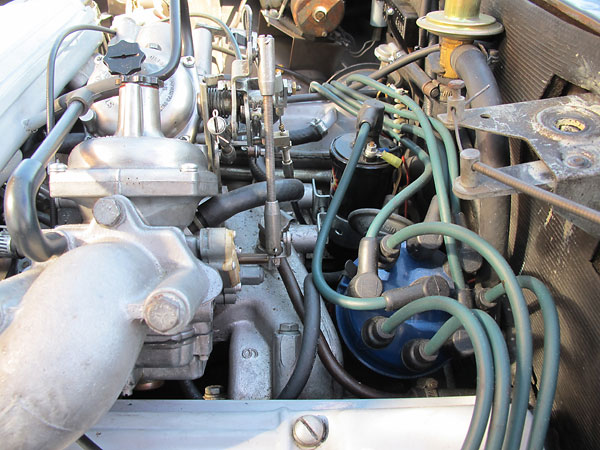
�
Dual Zenith Stromberg 175 CDSEV carburetors.
�
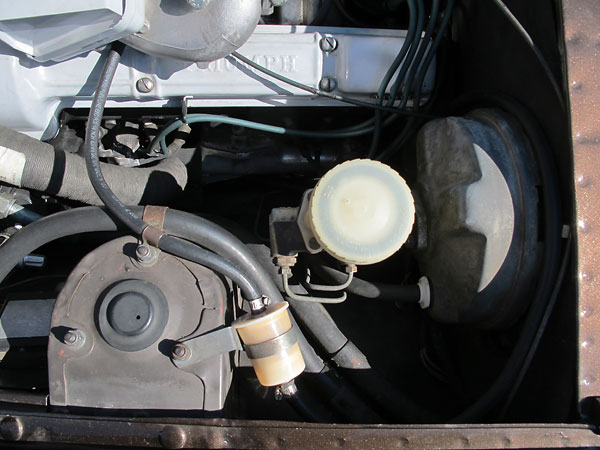
�
Power brakes were standard equipment on Triumph Stags. (AP Lockheed master cylinder.)
�
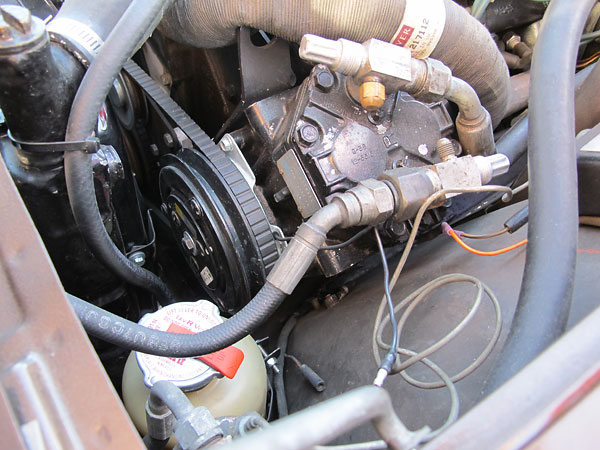
�
Air conditioning was a popular option on export market Stags.
�
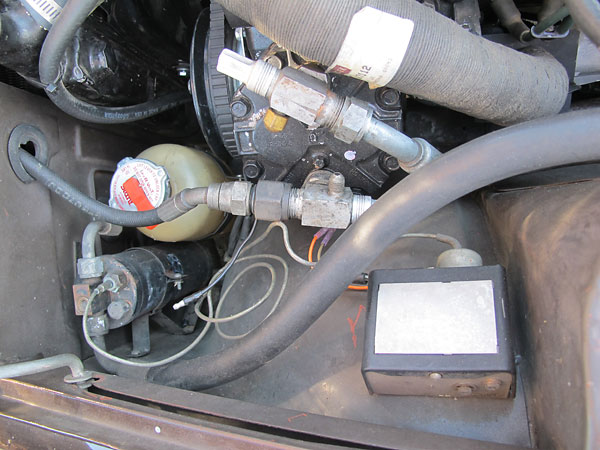
�
Foreground: a Panco high pressure cut-out for the air conditioning compressor.
�
(Note uplugged bullet terminal: the A/C compressor has been temporarily disconnected.)
�
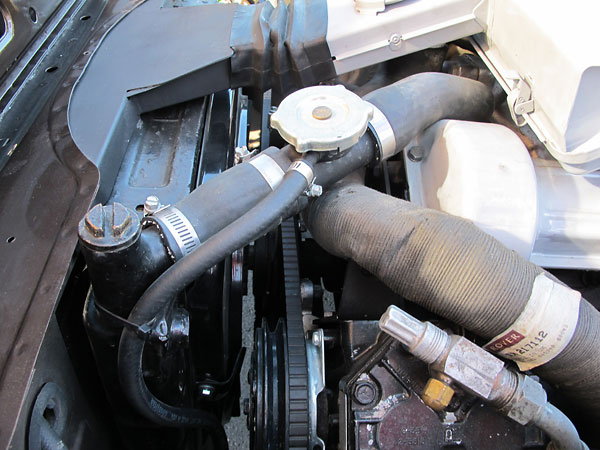
�
Radiator filler.
�
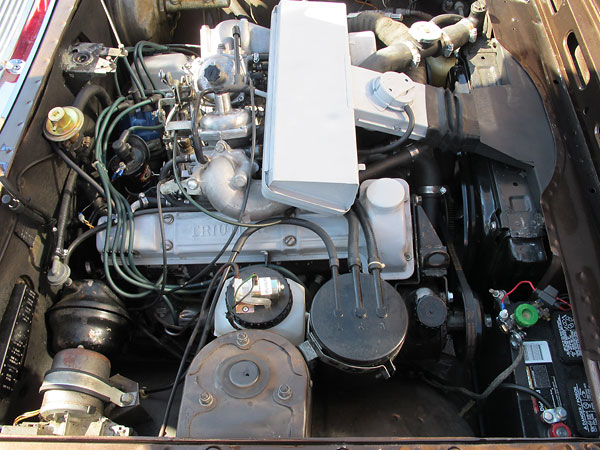
�
Panel air filter.
�
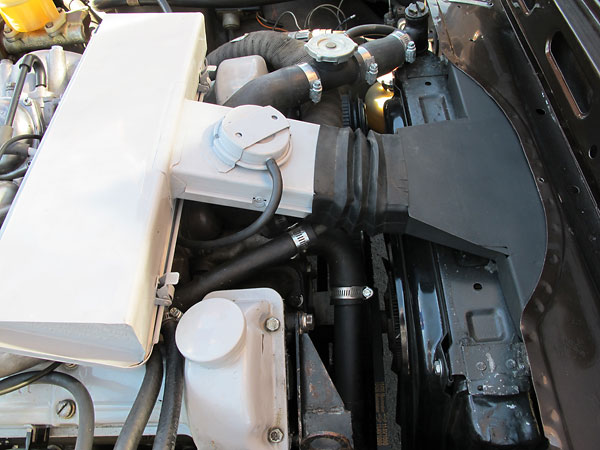
�
Genuine Triumph Stag stamped steel radiator cowling parts are very hard to come by.
�
Glenn Merrell has tooled up to make polycarbonate reproductions which look quite
�
authentic. He offers them as a three piece set, for $300. Bonus: they'll never rust!
�
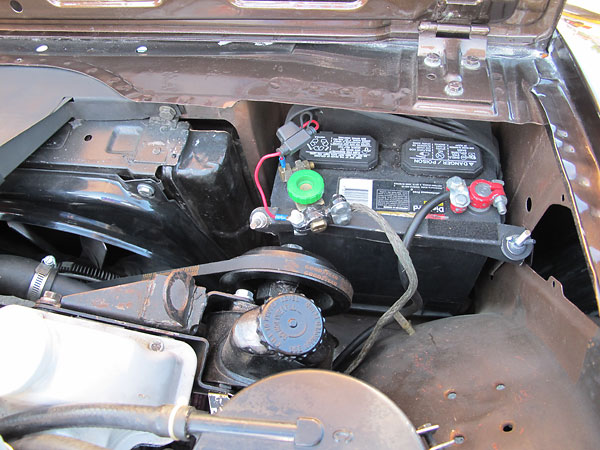
�
Sears DieHard battery.
�
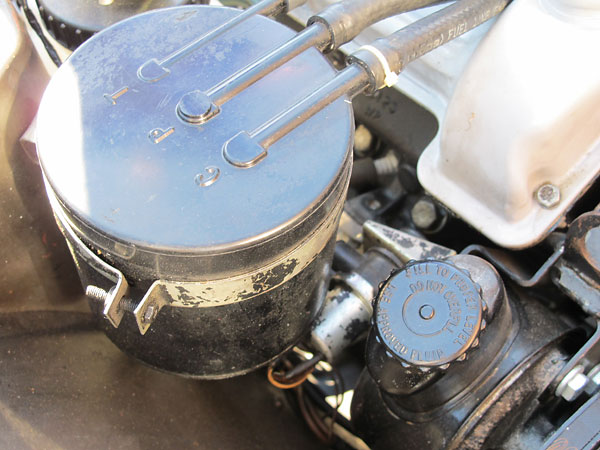
�
Charcoal canister: vapors from the fuel tank vent and the carburetor bowl vents are adsorbed
�
by activated carbon instead of polluting your garage and neighborhood. Later, fresh air is
�
drawn through the canister so the fuel fumes may be burned off. Evaporative emission
�
controls are reasonably simple, easy to maintain, and effective.
�
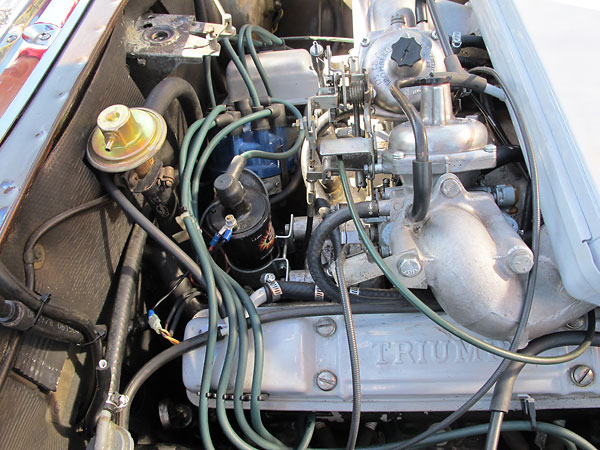
�
Triumph originally planned to offer the Stag with a 2.5L version of this engine, equipped
�
with fuel injection. At 2.5L, it didn't meet performance targets. The fuel injection
�
system was deemed too complicated, although Triumph was offering fuel injection on
�
contemporary six cylinder engines for the the British and European markets.
�
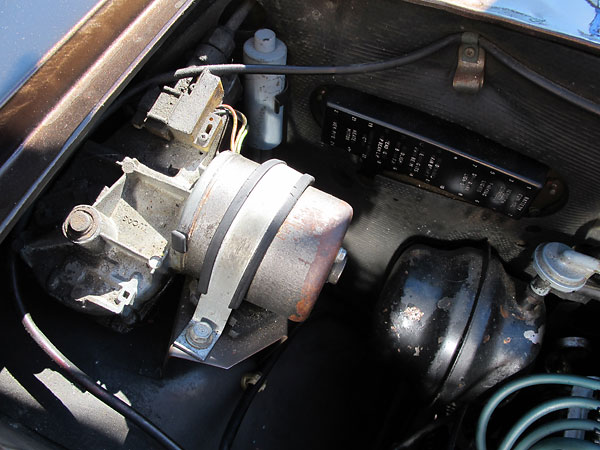
�
Clockwise from left: wiper motor, inertia switch, 12-circuit fuse block, and the
�
reservoir for vacuum operated climate control system air flaps and heater valve.
�
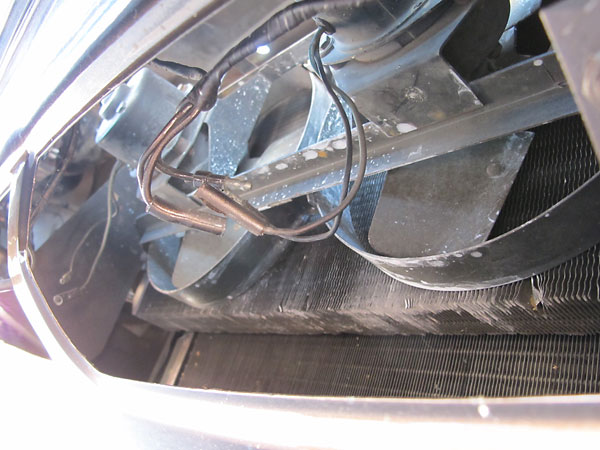
�
Temporarily disconnected electric fans for the AC condensor.
�
Front Suspension
��
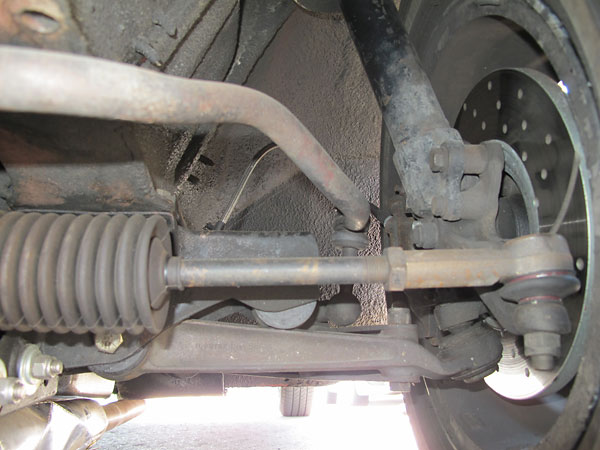
�
McPherson strut front suspension.
�
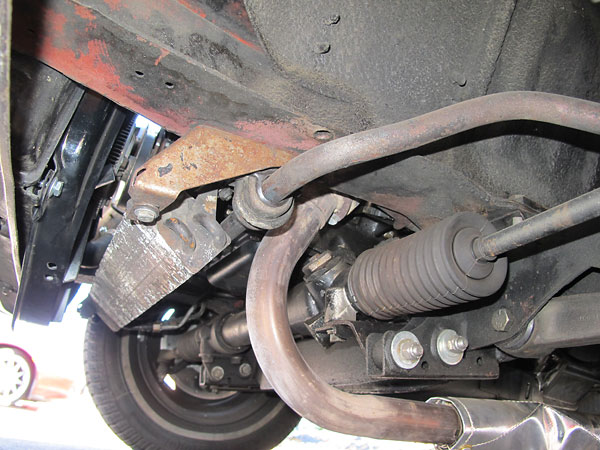
�
Transmission oil cooler.
�
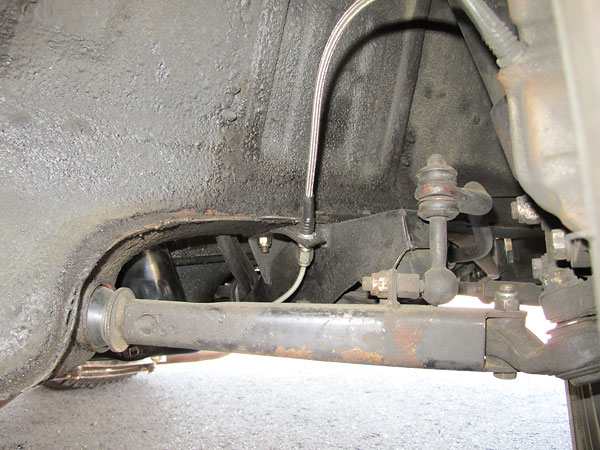
�
Rearward half of two piece lower control arm. (There is, of course, no upper control arm.)
�
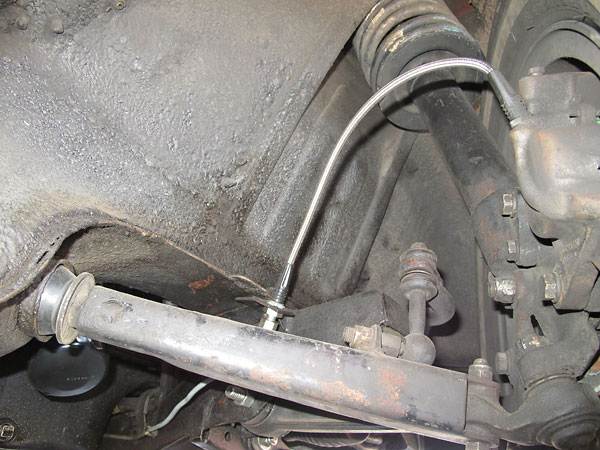
�
Coil spring.
�
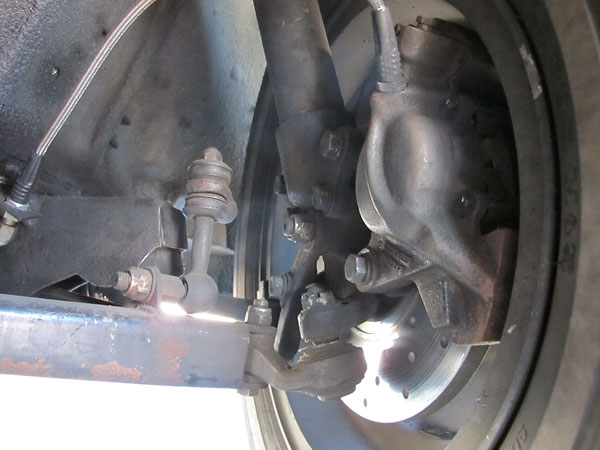
�
Brake caliper. (Dust shield temporarily removed.)
�
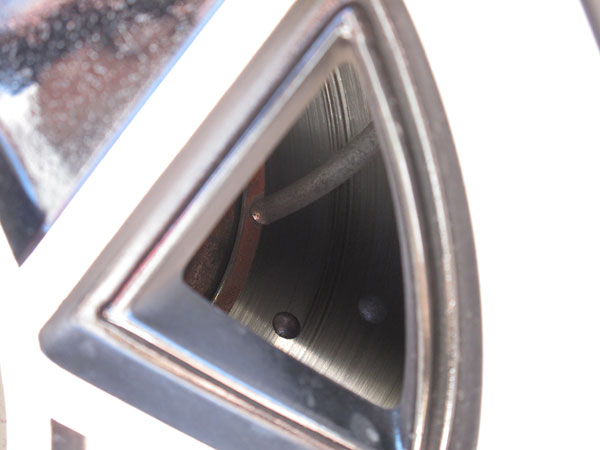
�
EBC grooved and dimpled front brake rotors.
�
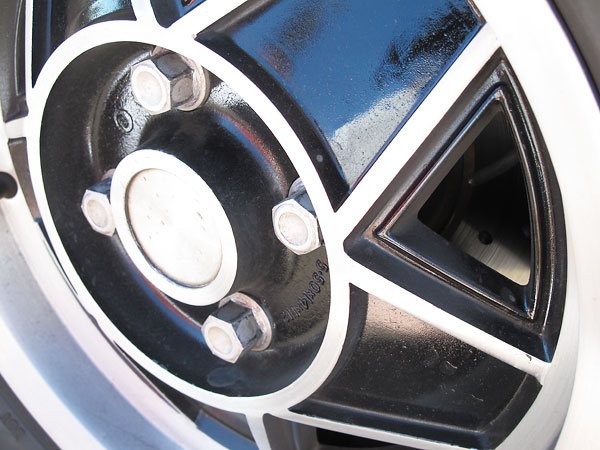
�
Wheels are marked: "5.50 x 14 x 1.12."
�
Rear Suspension
� �
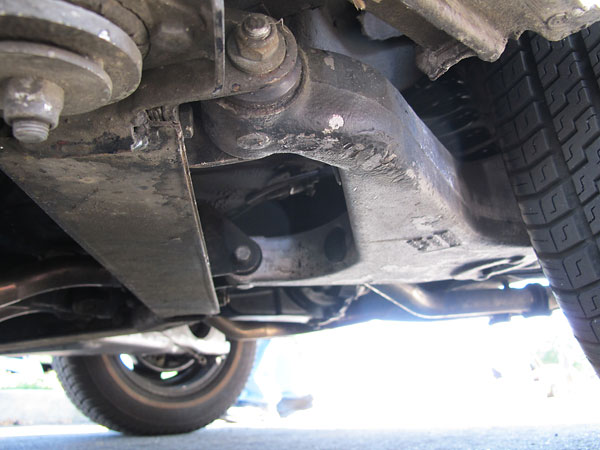
�
Triumph Stag independent rear suspension.
�
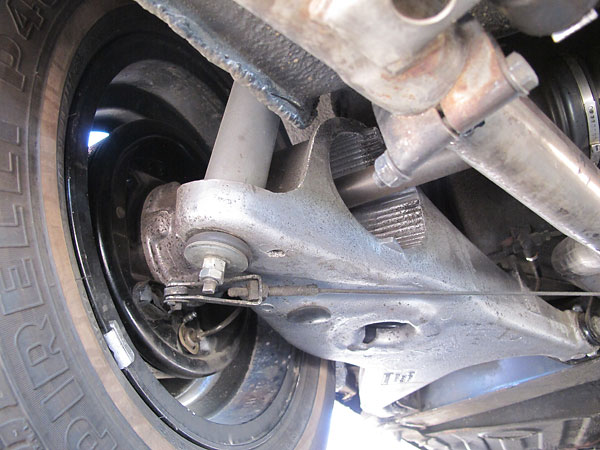
�
Original features: coil springs, telescoping shock absorbers, and drum brakes.
�
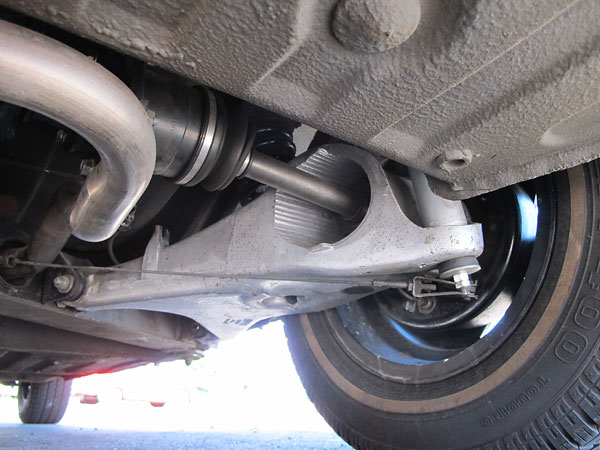
�
Upgraded feature: Good Parts CV-jointed rear axles.
�
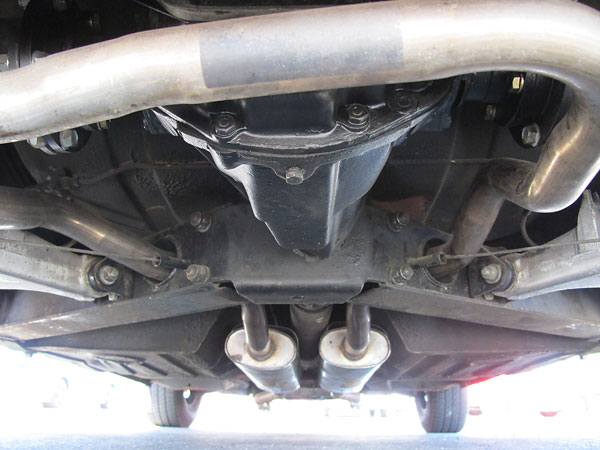
�
Triumph originally provided 3.71:1 rear axle gearing for Stags equipped with
�
Borg Warner T35 automatic transmissions. Changing to a 3.43:1 final drive ratio
�
is a substantial improvement as is a Phantom Grip limited slip differential.
�
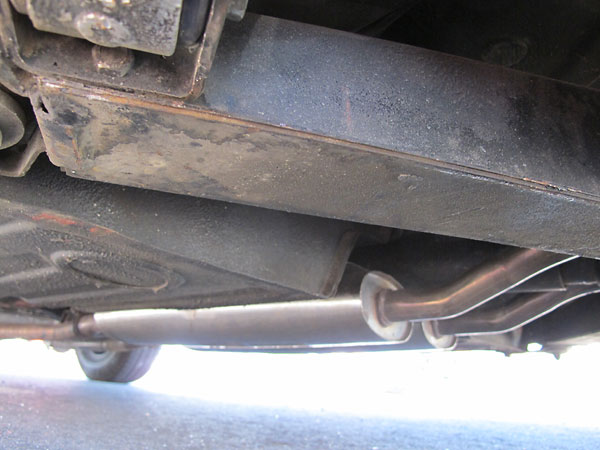
�
Dual stainless steel mufflers are an upgrade from stock.
�
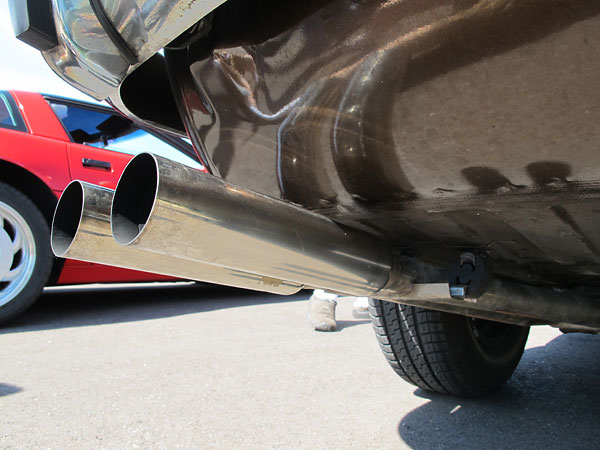
�
Dual tailpipes.
�
Interior
��
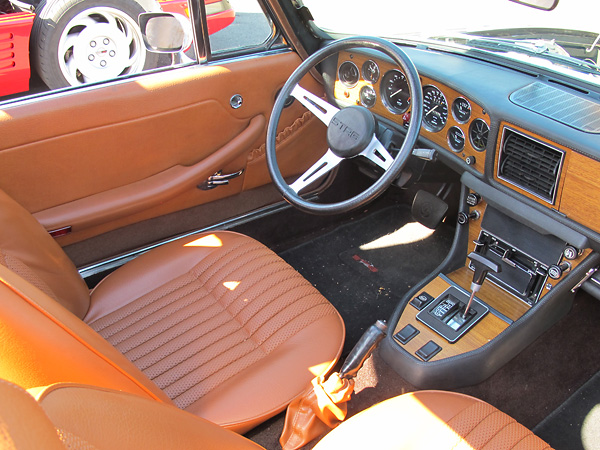
�
Former owner Chuck Kittelson completed most of this Triumph Stag's restoration (before he
�
passed away in 2009). The interior is accurate to original specifications, with one large
�
exception: leather dashboard trim has been installed where Triumph originally used vinyl.
�
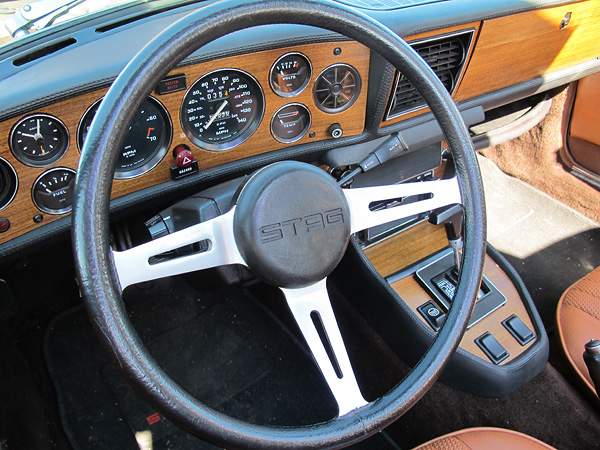
�
Power steering was provided as standard equipment.
�
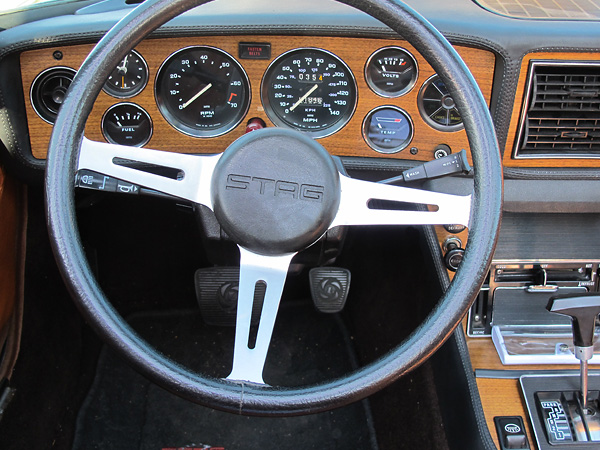
�
From the 1973 model year onwards, Triumph Stags came with smaller diameter steering wheels
�
(as shown here.)
�
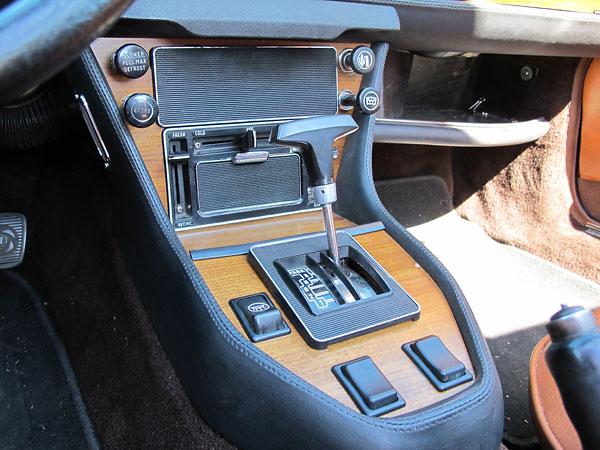
�
Most Triumph Stags were equipped with Borg Warner Type 35 3-speed automatic transmissions.
�
Four speed manual transmissions were optional equipment. Four speed transmissions with
�
Laycock overdrive units were a less popular factory installed option.
�
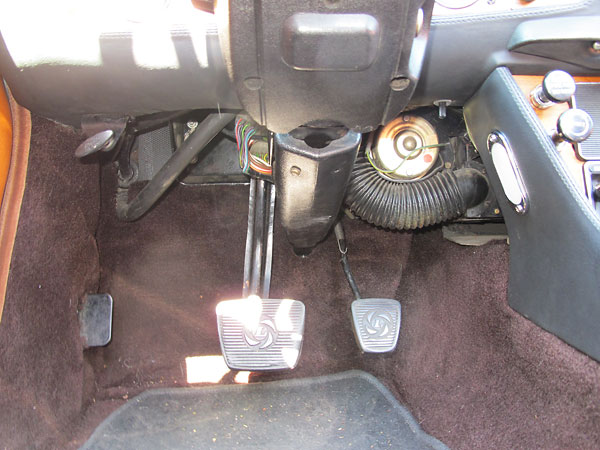
�
Triumph Stag pedals.
�
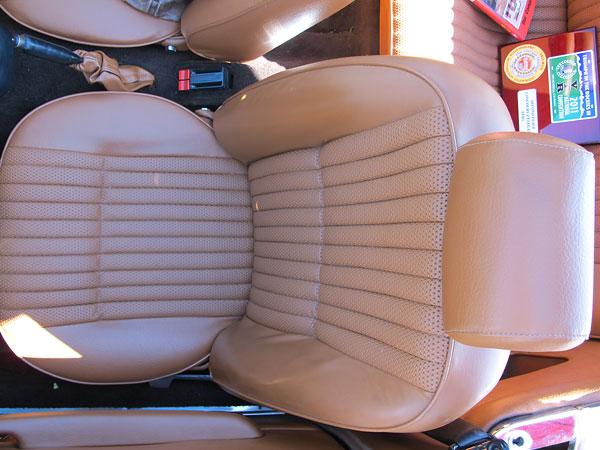
�
All United States market Triumph Stags were supplied with headrests to comply
�
with Federal safety standards. In England, early Stags came without headrests.
�
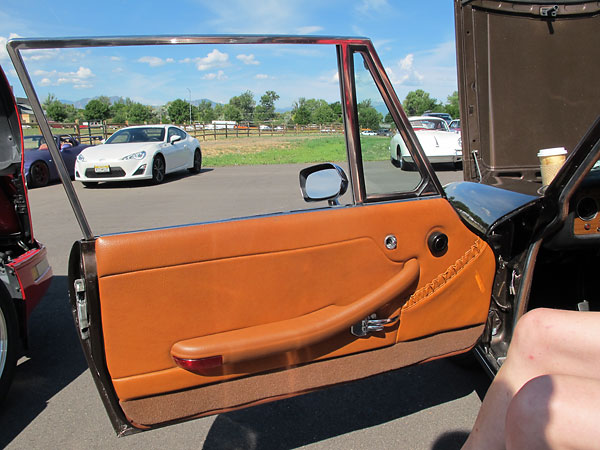
�
Electric windows were standard equipment.
�
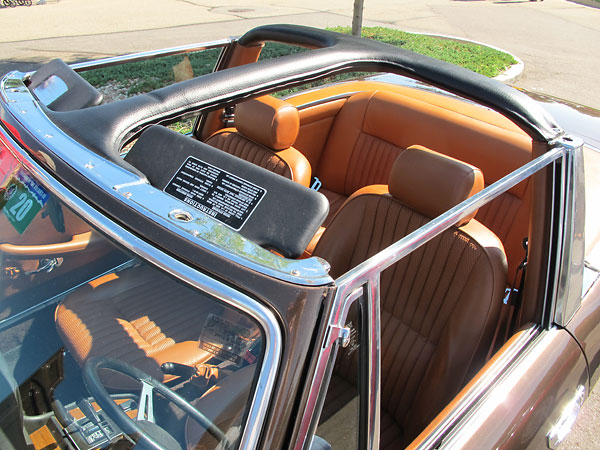
�
The Triumph Stag features unibody construction with a unique supplemental "T-bar" structure.
�
Why? Despite having vary different styling, the Stag underpinnings were derived from Triumph's
�
"2000" saloon, which had a full steel roof and which was equipped with a much less powerful
�
engine. The T-bar was deemed necessary to add stiffness to the Stag's otherwise open body.
�
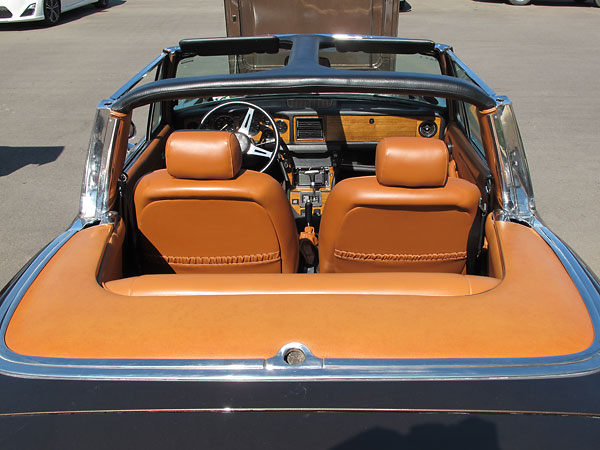
�
From the 1973 model year onwards, Triumph Stags were provided with both a soft top and
�
a hard top as standard equipment. With either top installed, the T-bar is underneath and
�
separate from the roof. This is distinctly different from a "T-top" design as seen on
�
Chevrolet Corvette models and some other General Motors products.
�
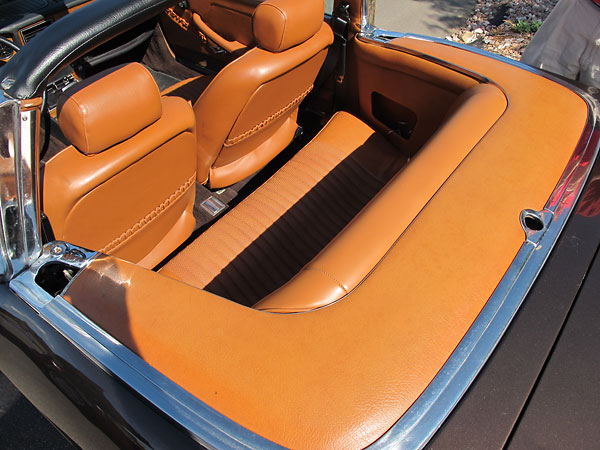
�
Triumph Stag back seat.
�
Exterior
��
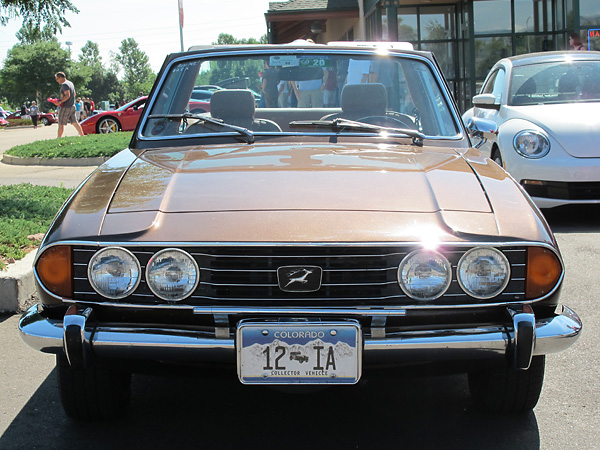
�
The Triumph Stag's distinctive look was created in 1964 and 1965 by Giovanni Michelotti, working
�
on his own initiative. Triumph executives were won over and decided to develop a "grand
�
tourer"; engineering commenced in 1966 and production launch was planned for 1968.
�
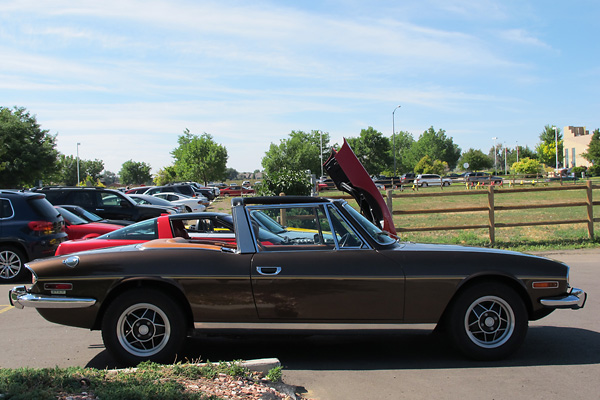
�
Triumph sought to position the Stag as a rival to the Mercedes-Benz SL series. For context:
�
230SL: ~19831 cars produced from 1963 through 1967 w/2.3L I6. 250SL: ~5196 cars, produced
�
1966-68 w/2.5L I6. 280SL: ~23885 cars produced 1967-71 w/2.8L I6. A second generation 280SL
�
carried on... From 1971 through 1980, Mercedes also offered a 3.5L V8 powered 350SL model.
�
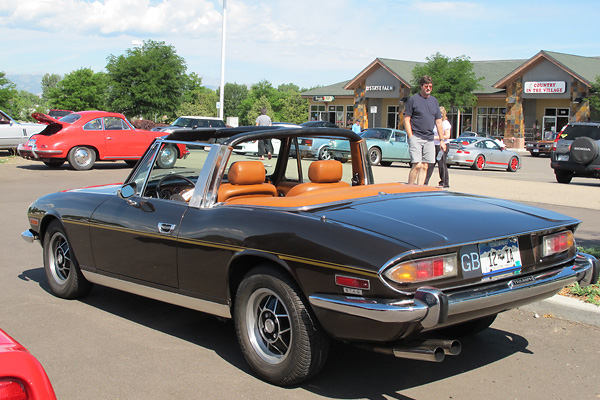
�
Triumph's stepsister company, Rover, introduced their "3500S" model in U.S.A. in October 1969.
�
Although a four dour sedan, it's worthwhile to compare its specifications to the Stag. For example:
�
in U.S.-market trim the Rover 3500S' aluminum V8 produced 45% more power (184bhp @ 5200rpm
�
& 226lb⋅ft @ 3000rpm. vs. ~127bhp as reported above.) However, its engine also weighed 22% less
�
(~350# vs. ~447#). The Rover V8 featured 18% more displacement (3528cc vs. 2997cc) and a much
�
higher compression ratio (~10.5:1). Best of all, it was a known entity with proven reliability versus
�
an all new design which would suffer teething pains. For more information, reference: 1, 2, and 3.
�
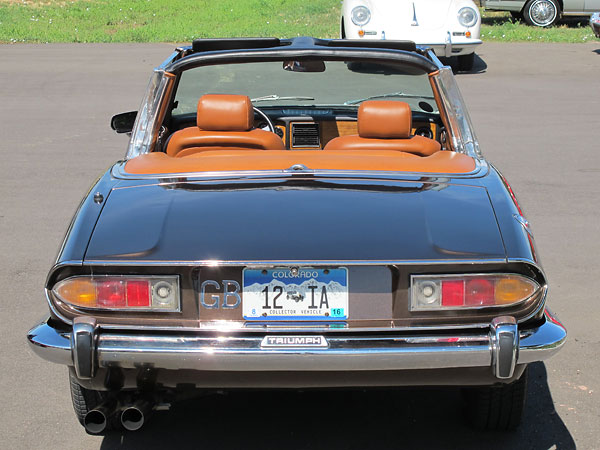
�
After various delays, the Triumph Stag was finally ready for the world in June of 1970.
�
Approximately 25939 Stags were built. Most were right-hand-drive cars for the home market.
�
Only 2781 Triumph Stags were exported to the United States. Although production continued
�
through 1977, export to the United States was discontinued after the 1973 model year.
�
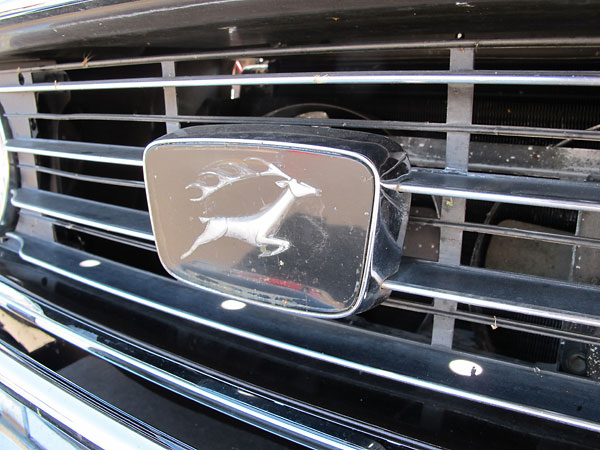
�
Triumph Stag grille badge.
�
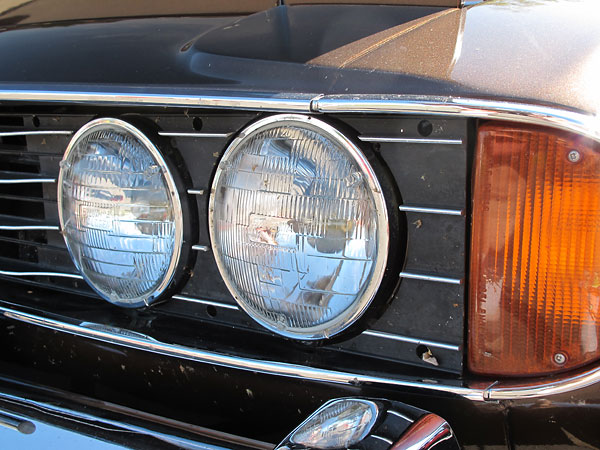
�
Sylvania Halogen sealed beam headlights.
�
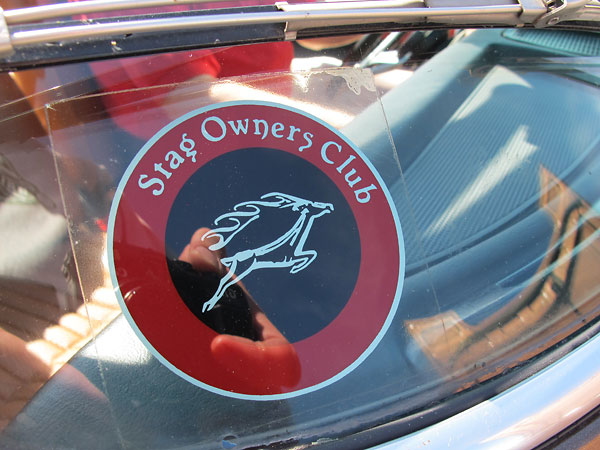
�
Stag Owners Club windscreen decal.
�
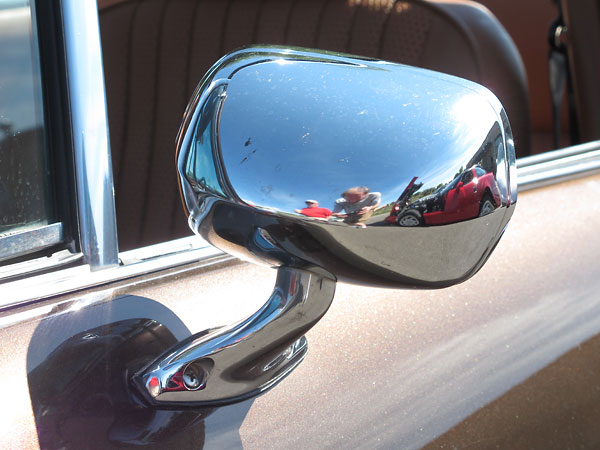
�
Triumph Stag side view mirror.
�
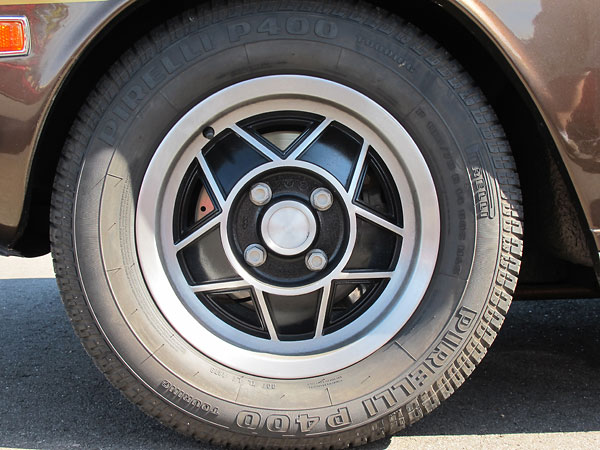
�
Triumph Stags were initially provided with Rostyle steel wheels as standard equipment and
�
with wire spoke wheels as an option. From the 1973 model year onwards, this style of 5-spoke
�
alloy wheels was offered instead of the wire wheel option.
�
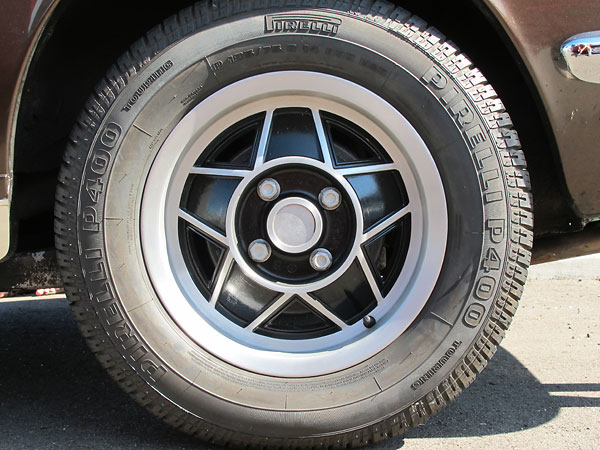
�
Pirelli P400 Touring 185/75R14 tires.
�

